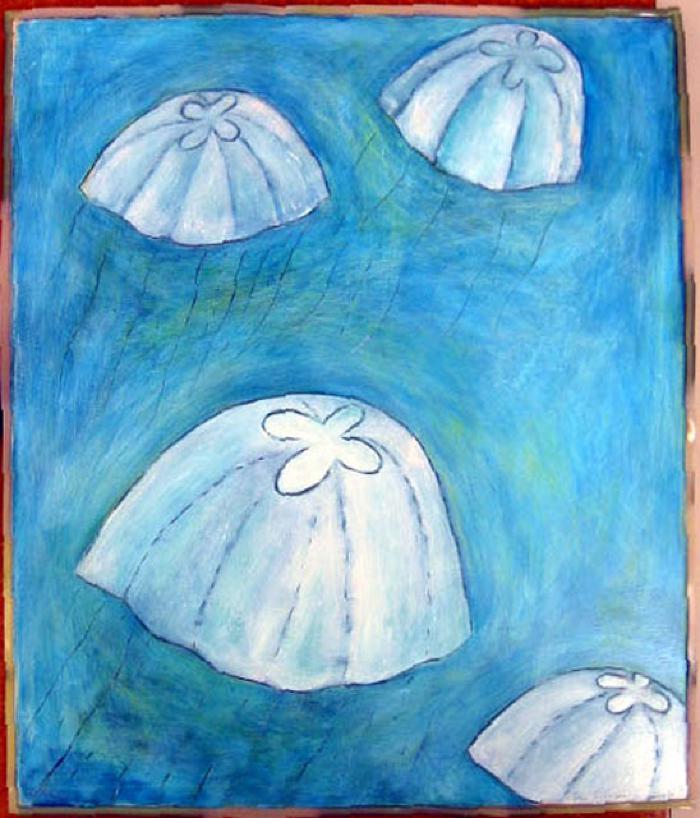Jellyfish — Iraluruaq

Jellyfish are plentiful in Alaska waters. These ancient marine creatures are not actually fish but invertebrates related to corals and sea anemones. Jellyfish have no brains, no heart, no eyes, and no ears, yet they are effective predators. To capture food, they use tentacles armed with poisonous, stinging cells. When their tentacles touch prey, thousands of tiny stinging cells fire, delivering a potent nerve toxin.
Some jellyfish are more poisonous than others. Around Kodiak, the lion’s mane jellyfish (Cyanea capillata), a large, bright-red species, delivers an intense sting that is much more painful than the sting of moon jellyfish (Aurelia aurita), a small clear variety.
Jellyfish have long been a problem for Kodiak fishermen, particularly for beach seiners and those who work unloading purse seines on the decks of fishing boats. Fishermen report releasing entire nets full of fish when large quantities of jellyfish are hauled in with the catch because they are so painful with which to work.
It is important to take care of a jellyfish sting immediately to minimize its impact. Alutiiq people wash the area and then apply a soothing agent. Some people use canned milk, particularly if the sting affects an eye. Others may employ vinegar or cool urine. Even with careful treatment, stings often produce red welts and may leave a scar.
